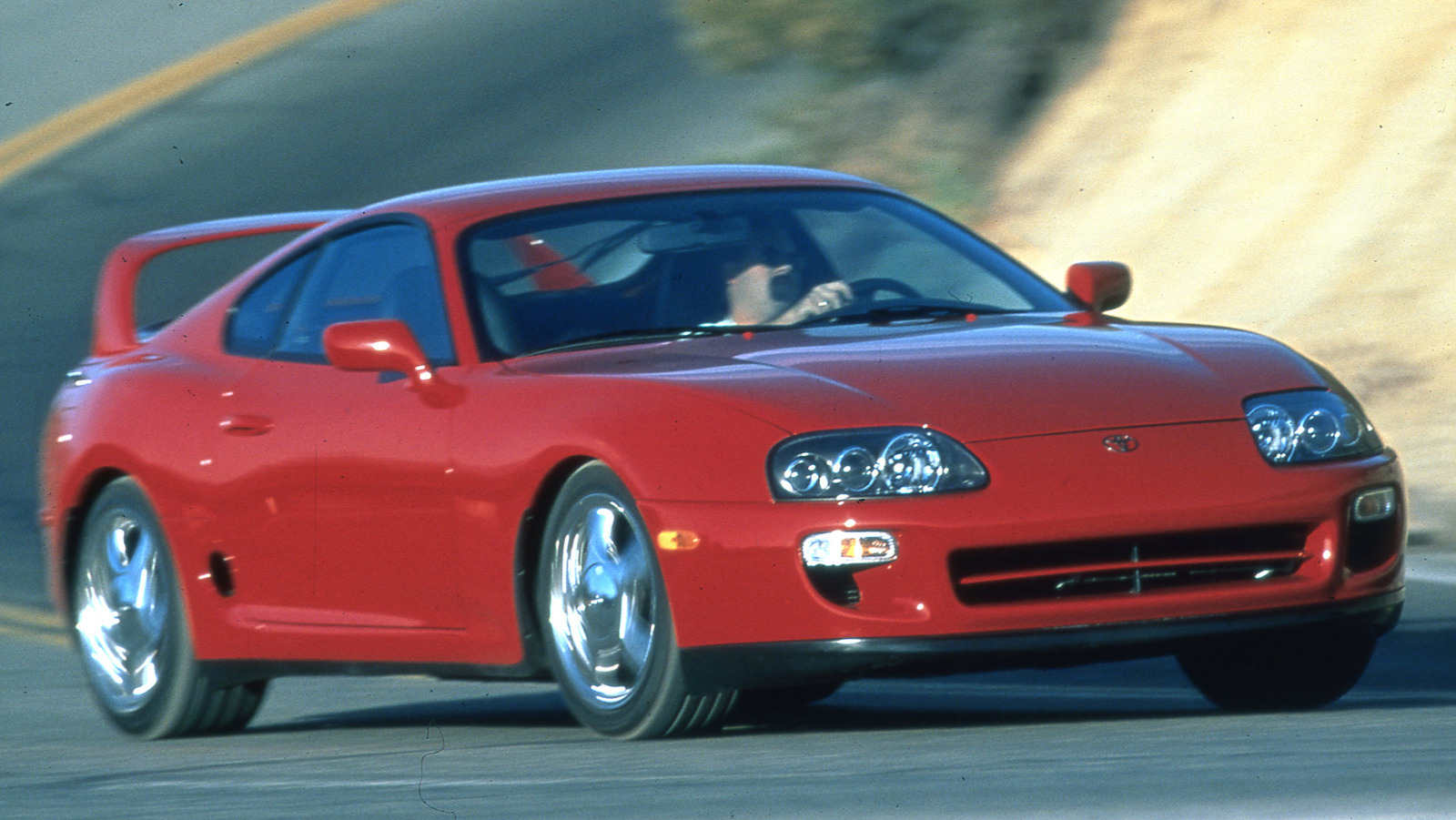
The smaller 2.5 liter 1JZ was released first as a replacement for the aging M-series inline-6 cylinders. However, Toyota decided not to fit the 1JZ into cars destined for the United States market, believing Americans would prefer the larger 2JZ.
The 1JZ has an “oversquare” design, where the 86mm cylinder bore exceeds the 71.5mm piston stroke. Like many engines with this bore-and-stroke relationship, the 1JZ can quickly reach high RPM. The 1JZ’s cylinder head is stuffed with dual overhead camshafts and four valves per cylinder.
Enthusiasts focus on the turbocharged version, the 1JZ-GTE. Initially, it had twin turbochargers — one turbocharger per three cylinders, but toward the end of its lifespan, a single large turbocharger fed all six cylinders. To cool the intake charge, an air-to-air intercooler was fitted. In stock form, the output of the twin-turbo motor was 276 horsepower.
The 2JZ retains the same 86mm cylinder bore as the 1JZ but has a longer 86mm stroke for a total displacement of 3.0 liters. A different taller engine block and longer connecting rods were required to accommodate the additional travel.
Also, like the 1JZ, a twin-turbocharged version of this engine was available, called the 2JZ-GTE. The 2JZ-GTE’s boasts two Hitachi turbochargers in a sequential configuration, which means that a smaller turbo kicks in first at lower RPM to improve low-end torque and reduce the “turbo lag” in throttle response that sometimes plagues boosted engines. In the U.S. market Supra, this engine made 320 horsepower.
Stay connected with us on social media platform for instant update click here to join our Twitter, & Facebook
We are now on Telegram. Click here to join our channel (@TechiUpdate) and stay updated with the latest Technology headlines.
For all the latest Technology News Click Here
